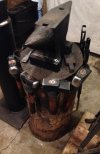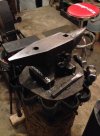- Joined
- Dec 1, 2002
- Messages
- 14
I am sure this topic has been covered before, but for some reason, I cannot pull it up in the search box. I have a bunch of used sanding belts that I just can't seem to throw away. Anyone know of any uses for them?
Thanks!!
Thanks!!


